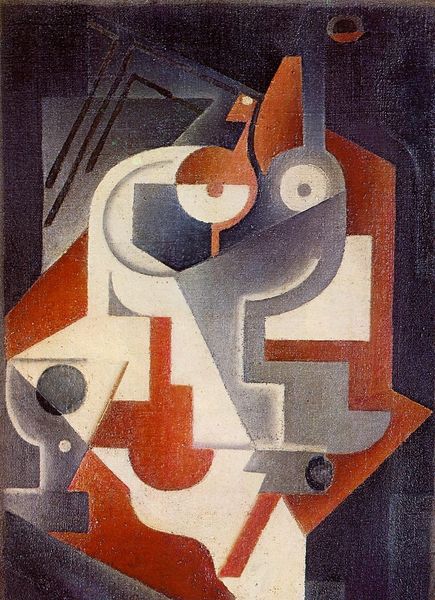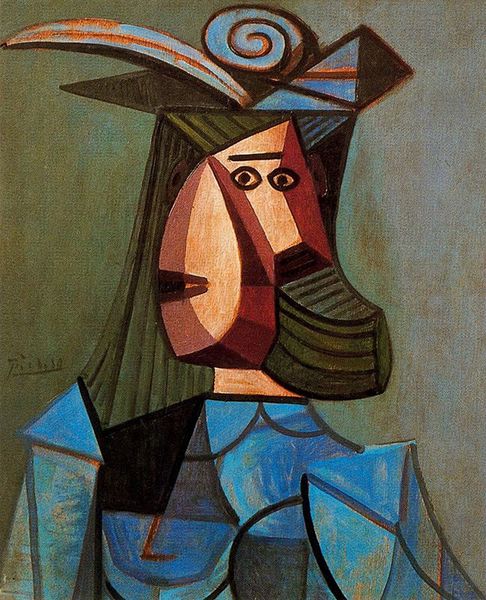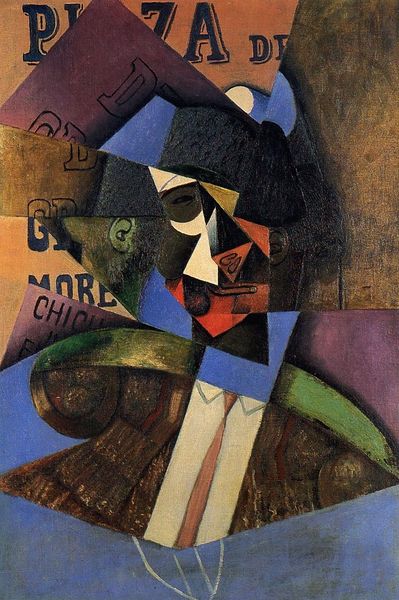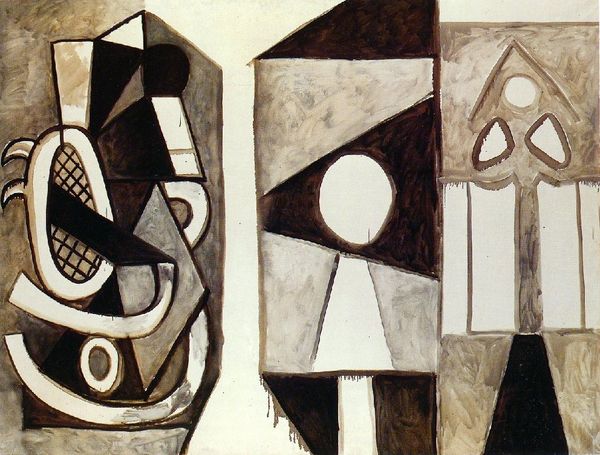
painting, oil-paint
#
portrait
#
cubism
#
painting
#
oil-paint
#
pop art
#
modernism
Copyright: Pablo Picasso,Fair Use
Editor: Here we have Picasso's "Woman Sitting in an Armchair" from 1941, done in oil paint. It's quite striking with the sharp angles and bold colors; the woman seems almost fractured. How do we understand such a portrayal, especially given the period in which it was created? Curator: This painting certainly embodies Picasso’s cubist style. But thinking about its creation in 1941 is critical. Europe was in the throes of World War II. Picasso remained in Paris, under Nazi occupation. The fracturing you see – is it just stylistic, or might it reflect a world that felt deeply fragmented and unsafe? Editor: That's a powerful idea. So the personal and political are intertwined here. Could the woman's somewhat rigid posture also be interpreted as a kind of resistance, or perhaps a forced stoicism in the face of hardship? Curator: Exactly. Consider the symbolism of the armchair itself – a space of supposed comfort and domesticity. Yet here, it appears angular, almost constricting. Think about how social roles for women were shifting, sometimes forcibly, during wartime. This painting isn’t just a portrait; it's a commentary on the disrupted social fabric. Editor: I hadn't thought about it in terms of the chair as symbolic. It really challenges the viewer to consider what’s not being said explicitly about the social context of the time. Curator: And that silence is precisely what makes the painting so compelling and disturbing. It makes us question our own assumptions about comfort, security, and representation. Editor: This really reshapes my perspective on Picasso, it gives such a new lens through which to see his works. Curator: Indeed! And hopefully a more socially aware approach when considering all art!
Comments
No comments
Be the first to comment and join the conversation on the ultimate creative platform.













